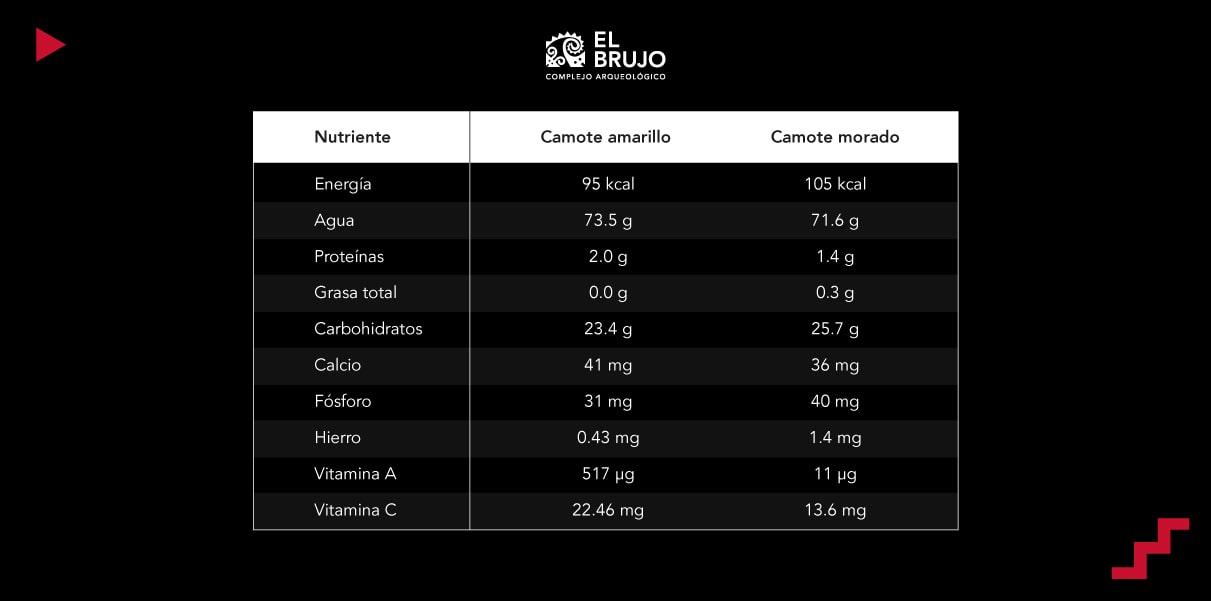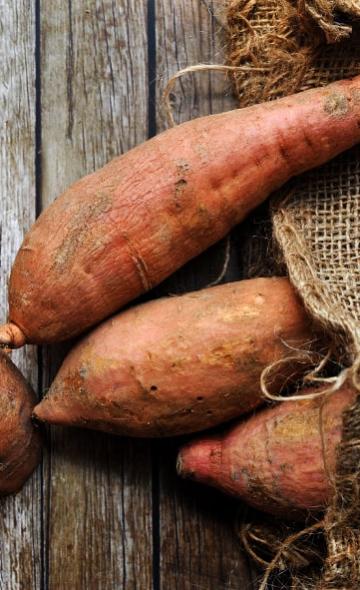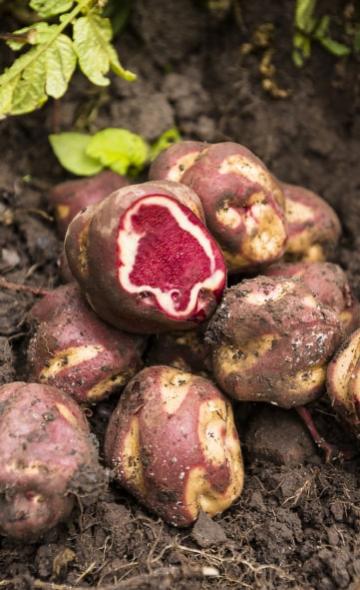- Visitors
- Researchers
- Students
- Community
- Information for the tourist
- Hours and fees
- How to get?
- Visitor Regulations
- Virtual tours
- Classic route
- Mystical route
- Specialized route
- Site museum
- Know the town
- Cultural Spaces
- Cao Museum
- Huaca Cao Viejo
- Huaca Prieta
- Huaca Cortada
- Ceremonial Well
- Walls
- Play at home
- Puzzle
- Trivia
- Memorize
- Crosswords
- Alphabet soup
- Crafts
- Pac-Man Moche
- Workshops and Inventory
- Micro-workshops
- Collections inventory
- News
- Students
- Learn about the properties of sweet potato and its high nutritional value
News
CategoriesSelect the category you want to see:

What is an anaco, a garment found in the funerary bundle of the Lady of Cao and in the Lambayeque funerary bundles? ...

Inauguration of the 2025 Tourism Panel Discussions in Magdalena de Cao ...
To receive new news.
Por: Complejo arqueológico El Brujo
Sweet potato (Ipomoea batatas), also known as camote in this and other countries, is a tuber widely consumed in various parts of the world. This food not only stands out for its sweet flavor and versatility in the kitchen, but also for its high nutritional value and its millenary history. Sweet potato has been a fundamental food in the diet of various pre-Hispanic cultures in Peru such as the Mochica culture.
Below, we invite you to learn more about the properties of sweet potato, its nutritional value and its origin.
Properties and benefits of sweet potato: health, energy and nutrition
Sweet potato is a rich source of essential nutrients that make it a highly beneficial food for health. According to the Ministry of Agrarian Development and Irrigation (MIDAGRI), sweet potato is a versatile and nutritious food that is part of Peru's food security. Among its main properties are:
• High vitamin A content: Sweet potato is known to be an excellent source of beta-carotene, a compound that the body transforms into vitamin A. This vitamin is essential for eyesight and the immune system.
• Healthy source of energy: The carbohydrates present in sweet potatoes provide energy in a sustained way, which makes it a good option for athletes and people with high energy demand.
• Rich in fiber: Fiber is an essential component for the proper functioning of the digestive system, and sweet potato, as it contains a good amount of fiber, helps to improve intestinal transit.
Yellow sweet potato vs. purple sweet potato: which one to choose?
There are two main varieties of sweet potato that stand out for their nutritional differences: yellow sweet potato and purple sweet potato. Below, we offer you a comparison that highlights their main components per 100 grams:

Both varieties of sweet potato provide energy, fiber, and essential nutrients, but differ in their content such as vitamin A in yellow sweet potato and iron in purple sweet potato. Yellow sweet potato stands out for its high vitamin A content, while purple sweet potato provides more iron and phosphorus.
The millenary history of sweet potatoes and the Mochica
Many varieties of sweet potato are found in Mesoamerica, but recent studies record their consumption about 10,000 years ago in a tropical region that encompasses southern Central America and northern South America. This tuber was already cultivated thousands of years before the arrival of the Spaniards in America, which makes it one of the oldest crops and of great historical relevance.
In Peru, the oldest remains of sweet potato were found in Huaca Prieta and date back between 5,300 and 4,100 years. Evidence has also been found in other important archaeological sites such as Caral, Huaynuná, Pampa de Llamas-Moxeque and Tortugas, which shows that sweet potato was part of the diet of the coastal peoples about 3,000 years ago.
Remains of sweet potato have been found in Huaca de la Luna dating from the epoch of the Mochica culture (between 200 and 800 AD). Also, this tuber is represented in the pottery of the Mochica.
Sweet potato cultivation expanded from the tropical region to other parts of Latin America and the rest of the world after the arrival of the Spaniards. Its easy adaptation to different climates and its ability to grow in less fertile soils, contributed to its global dissemination.

Add sweet potatoes to your diet: delicious and nutritious options
Sweet potato, apart from being a delicious and versatile food, is also a source of essential nutrients that can improve health. Its high content of vitamin A, fiber, and healthy carbohydrates makes it an ideal choice to incorporate into the diet.
From sides and desserts to main dishes, the culinary possibilities of sweet potato are numerous. Whether baked, boiled, pureed or as chips, this tuber is an excellent alternative for those looking to eat a balanced and nutritious diet.
Thanks to the research and dissemination efforts made by institutions such as CAEB (El Brujo Archaeological Complex) and MINAGRI (Ministry of Agriculture and Irrigation), today we have more information about the properties of sweet potatoes and their historical relevance. Thus, we can enjoy this valuable food while learning about its rich cultural past.
Students , outstanding news




